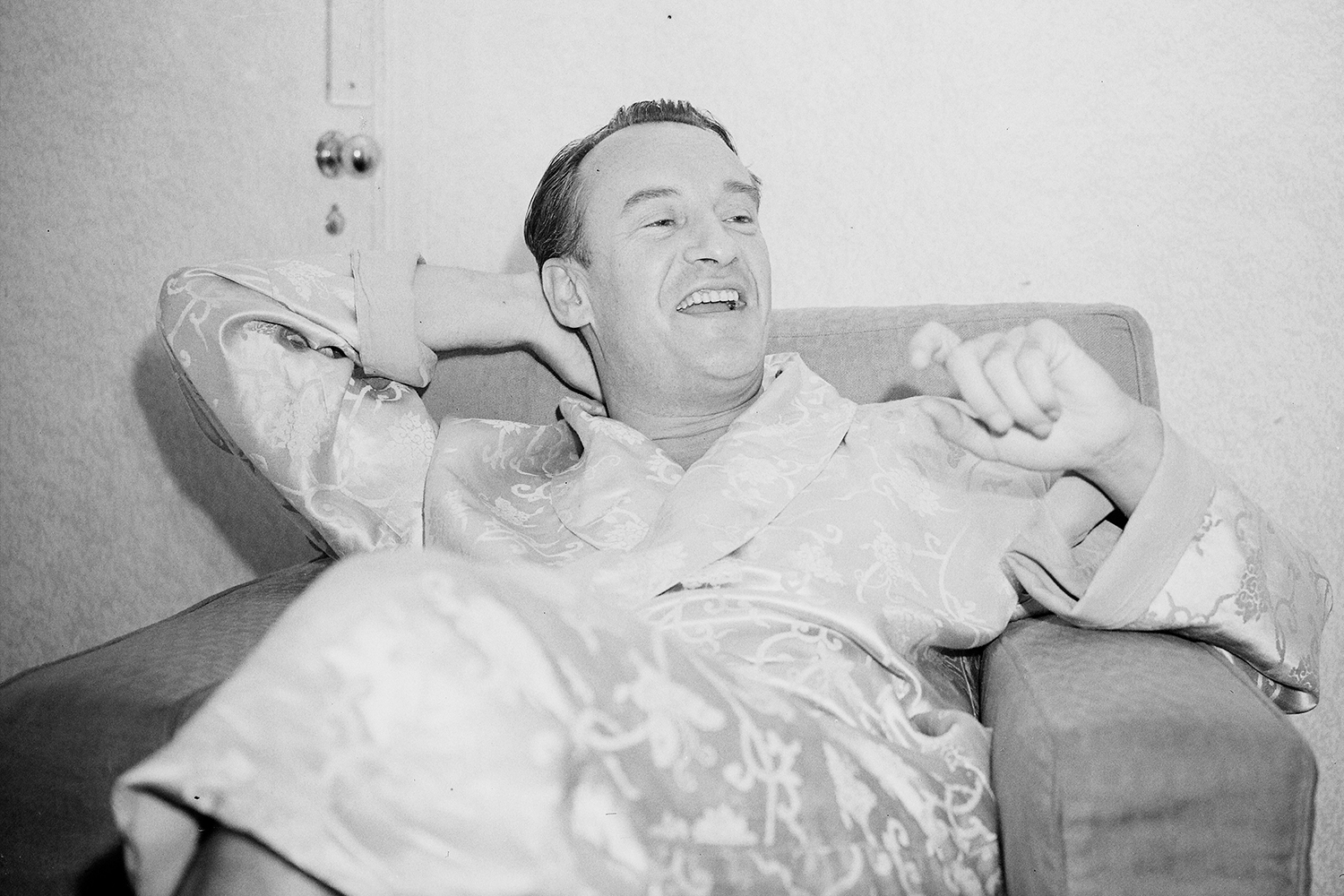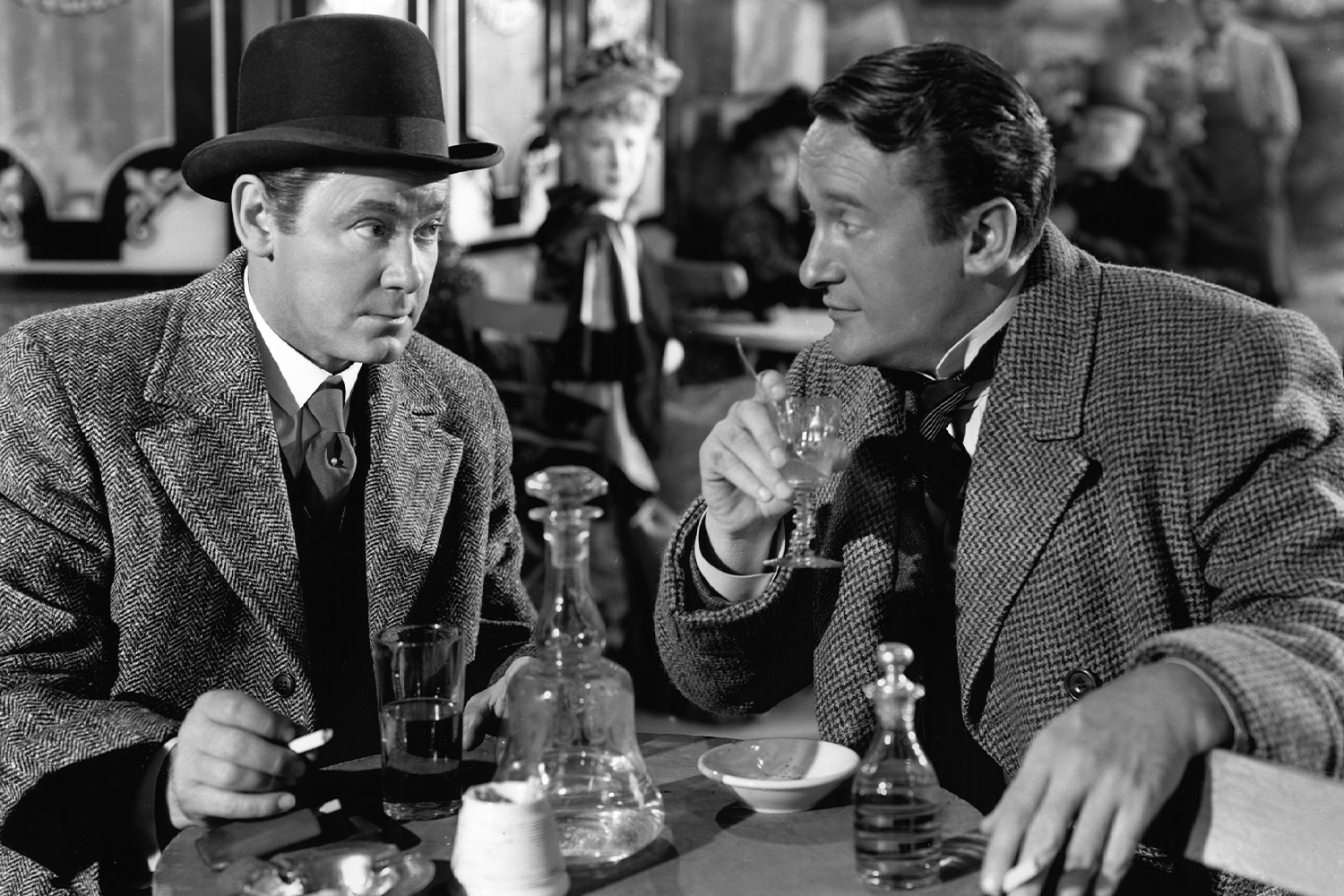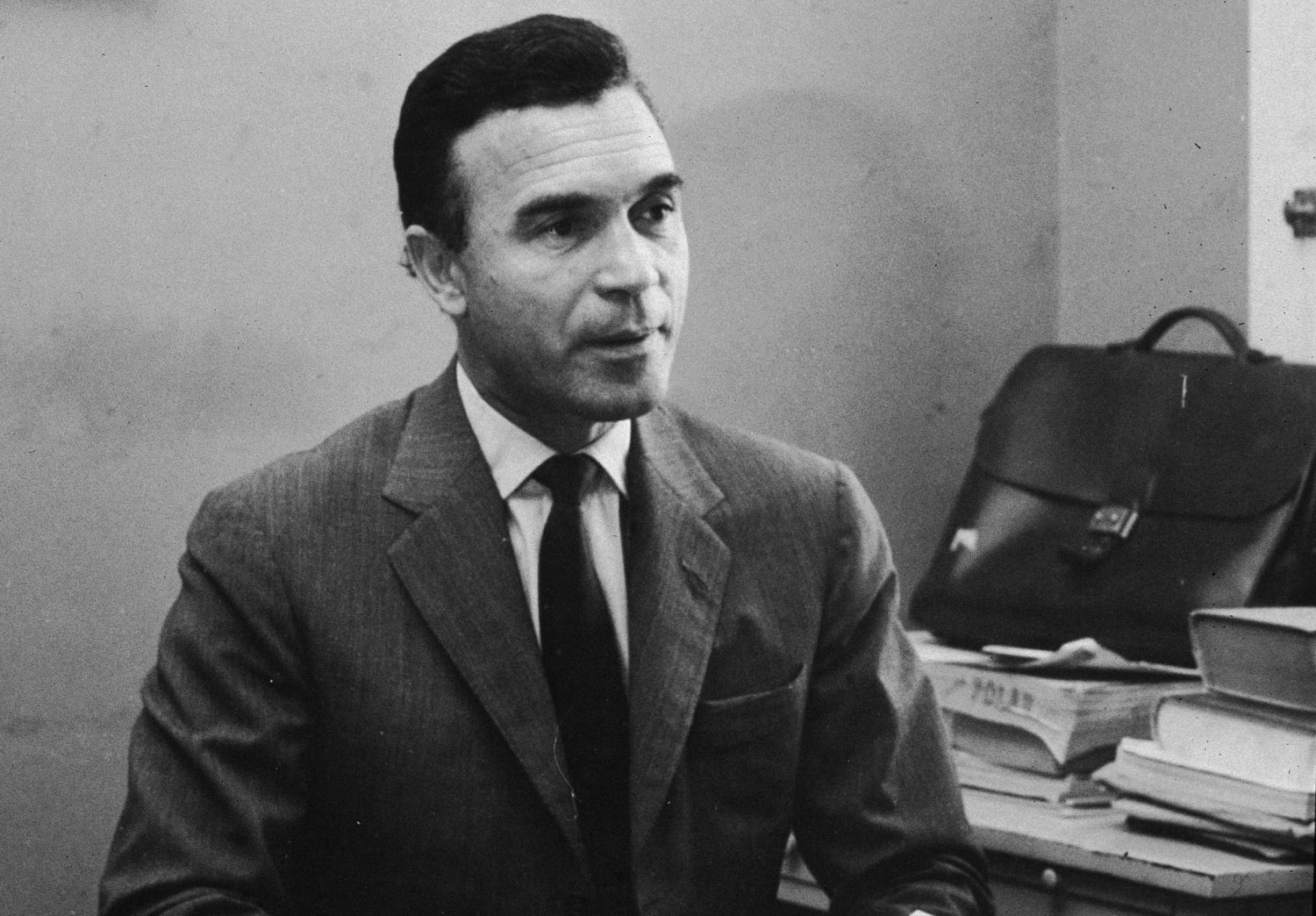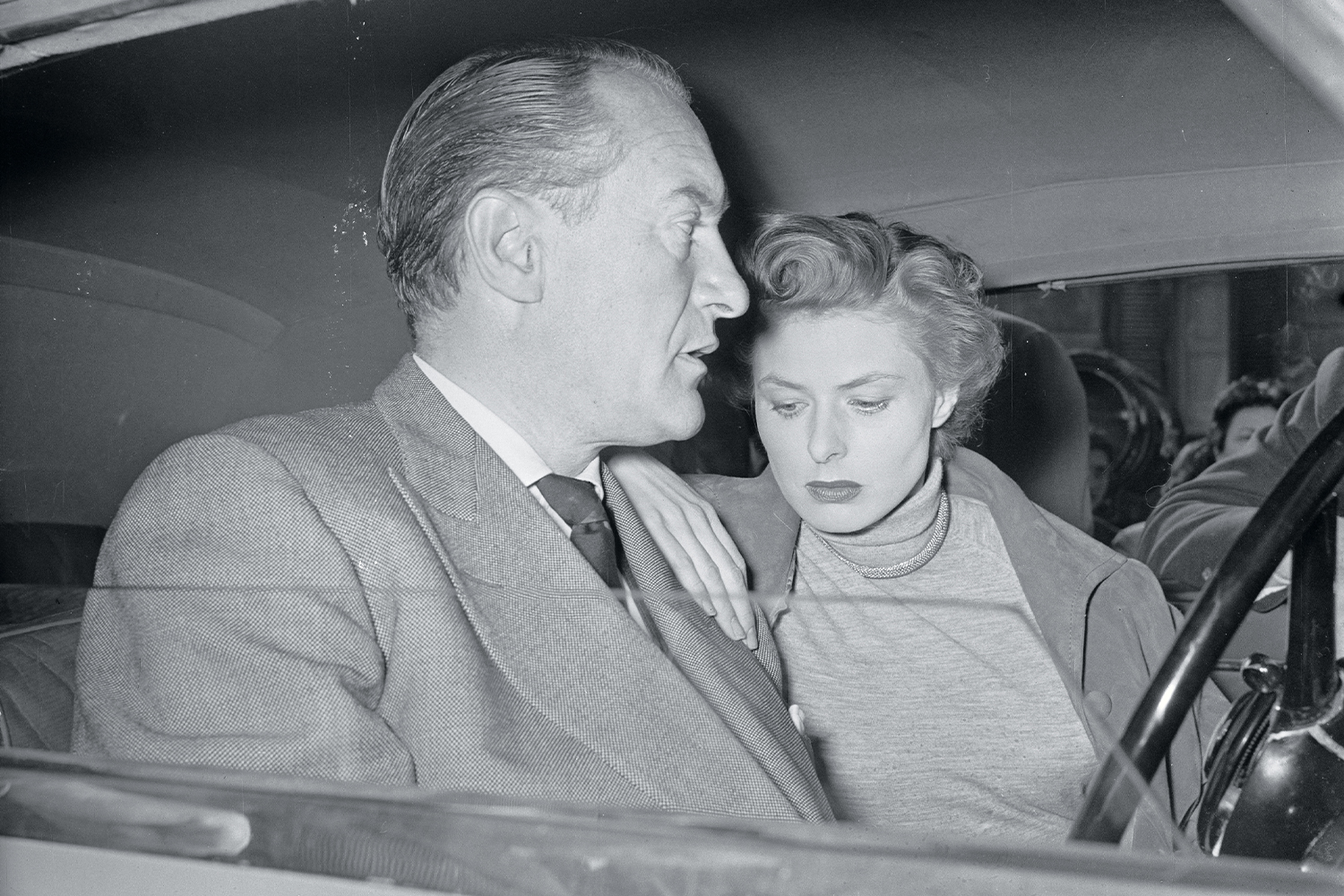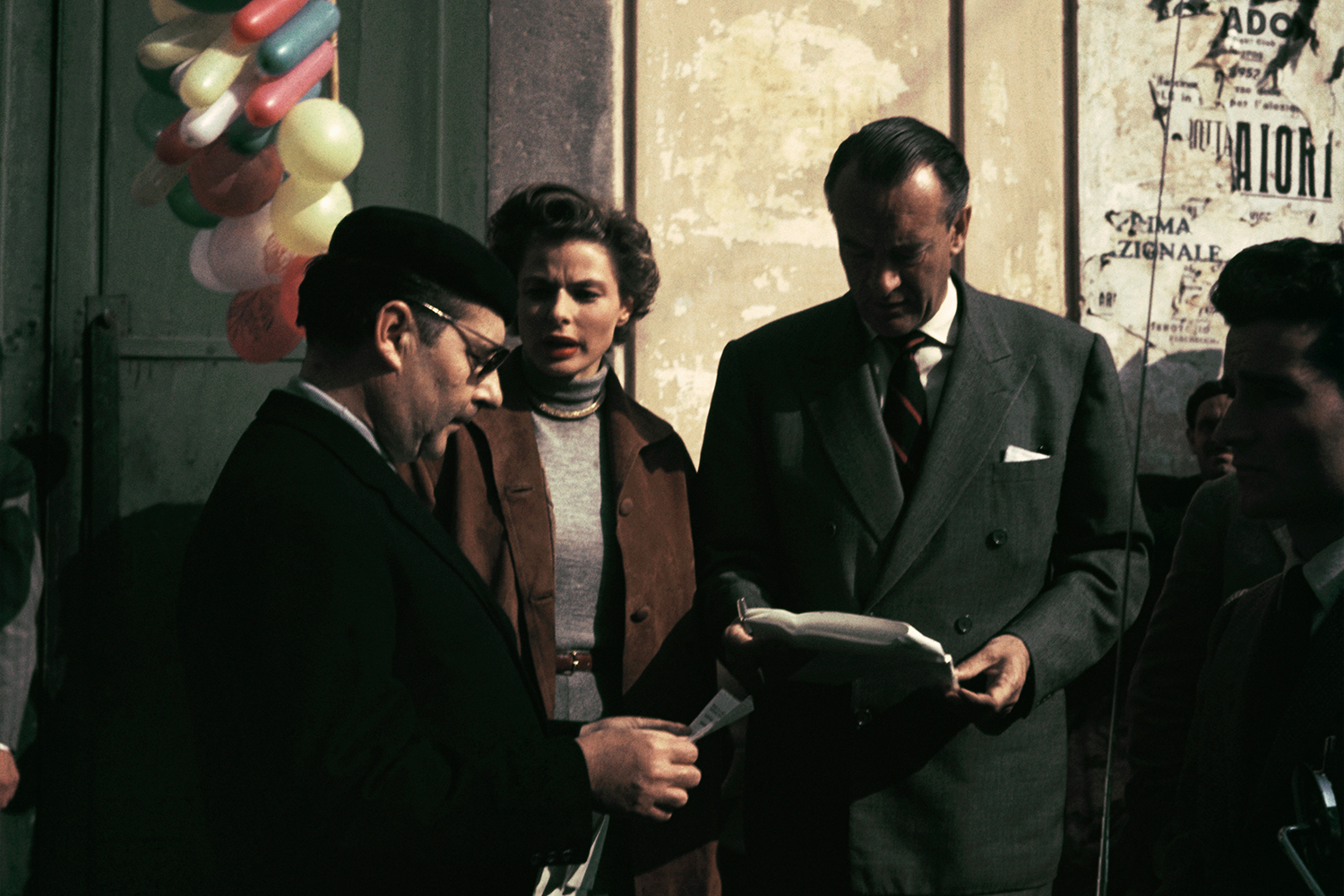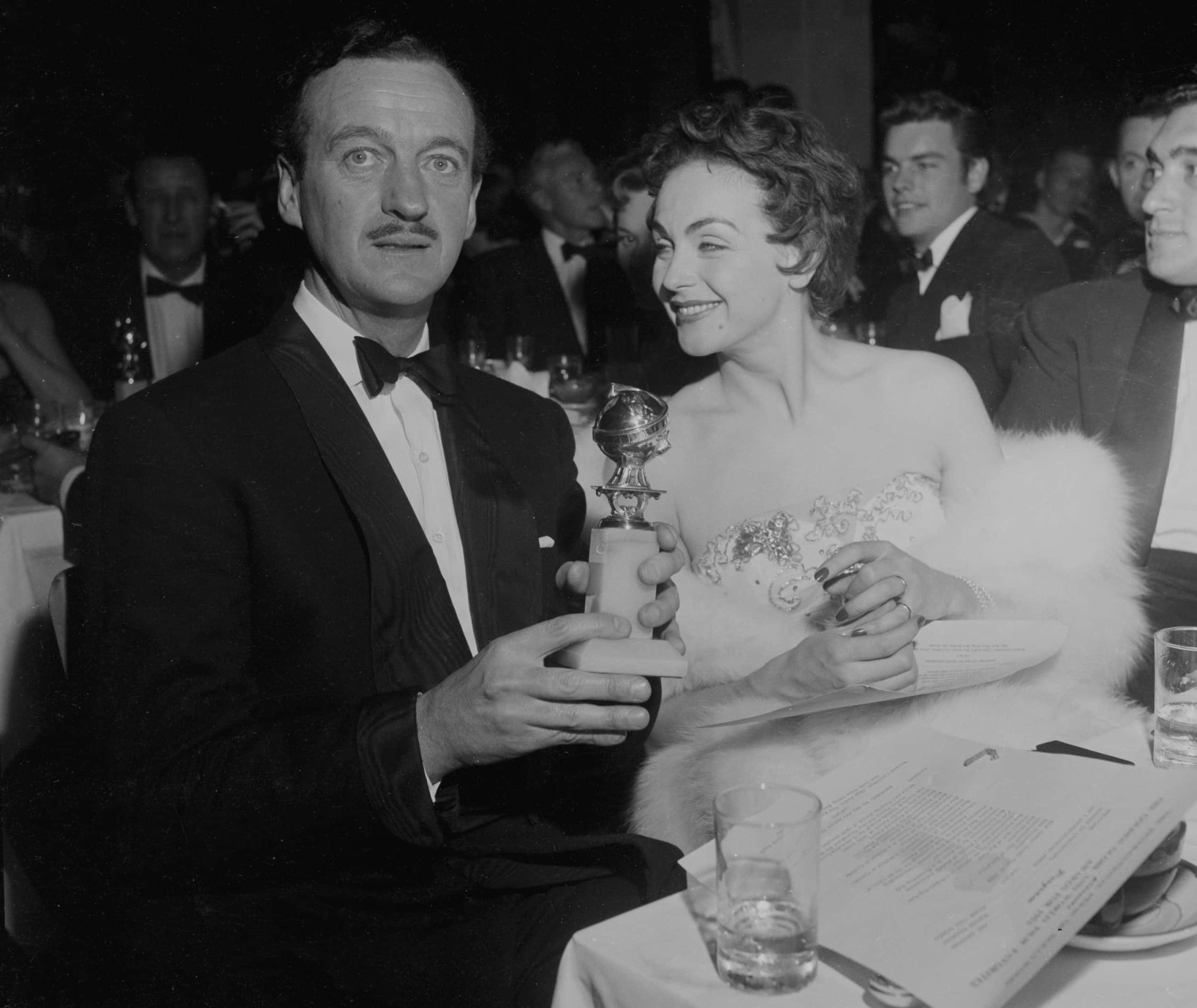While the name George Sanders may not ring a loud and clear bell—his face and voice are instantly recognizable. Studios tended to use him for villainous roles or as characters who were agonizingly pretentious. He was, in fact, a man that audiences loved to hate.
The funny thing was that in real life he was more or less the same. Was there a reason why Sanders was so bitter?
1. He Had A Rude Awakening
George Henry Sanders was born on July 3, 1906 to British parents in Saint Petersburg Russia. He had a glittering childhood and enjoyed all the privileges of his high-class life. But this utopic lifestyle was doomed. In 1917, the Russian Revolution turned his world upside down. Young Sanders had his first taste of reality—and it was brutal.
 Michael Ochs Archives, Getty Images
Michael Ochs Archives, Getty Images
2. He Fled The Country
The Russian Revolution stripped Sanders of the luxury he'd become accustomed to: “The Tsar had signed away our inheritances, our holdings, and our gilt-edged future...” His family—seeing the writing on the wall—had no choice but to flee the country. They ended up in Britain, but this turned about to be yet another nightmare for the young boy.
3. He Was Lonely
In England, George Sanders was a refugee. There was a loneliness to being a foreigner in a new country. His new situation was in biting contrast to his comfortable, carefree lifestyle in Russia. However, by the time 1926 rolled around, Sanders found a way to escape. The young man had a taste for adventure—and as we'll see, it got him into loads of trouble.
4. He Had A Bizarre Lifestyle
George Sanders began working for a tobacco company in 1926—and this led him to a colorful and bizarre chapter of his life in South America. According to his memoirs, Sanders got up to all kinds of shenanigans. He owned a pet ostrich, swam in his dress clothes in Parque Belgrano—and most scandalously—had a drunken duel.
5. They Kicked Him Out
According to Sanders, this infamous duel not only landed him behind bars, but also got him booted out of the continent altogether. When the Great Depression hit, he found himself back in Britain. There, he began a more sobering line of work in advertising, but not for long.
The company secretary was none other than Greer Garson, who—at the time—had yet to become a huge star. She was the one to nudge Sanders toward a whole new career: acting.
 Silver Screen Collection, Getty Images
Silver Screen Collection, Getty Images
6. He Managed To Stay On
Sanders' first foray into films was 1936’s The Man Who Could Work Miracles. In it, the three male actors were supposed to seem god-like, so the costume department decided to grease them up. But there was just one problem. As a result, the horses they were riding also got greasy and…well…let’s just say things got slippery.
In the end, Sanders was the only hunk who managed to stay on the horse. He may have stayed on the horse, but destiny was about to take him off the island.
 Silver Screen Collection, Getty Images
Silver Screen Collection, Getty Images
7. He Could Not Refuse
In addition to films, Sanders continued to work on the British stage. That's when received an offer that he simply could not refuse: a role in the stage play, Conversation Piece. Written and directed by the prolific playwright Noel Coward, the project took place in New York City.
Sanders raced across the pond to kickstart his American career. Sadly, the play was not a success and had to close after only 55 performances. But there was still hope. Hollywood was just around the around corner.
8. He Was A Villain
In 1936, 20th Century Fox needed someone to play a villainous role. The film was Lloyd's of London and the studio thought that Sanders’ British accent and suave demeanor made him the perfect foil to Tyrone Power’s character.
Lloyd’s of London was an instant sensation that began Power’s illustrious career—and Sanders didn't leave empty-handed either...Fox offered him a seven-year contract.
 John Springer Collection, Getty Images
John Springer Collection, Getty Images
9. He Was A Saint
The first thing Fox did with Sanders was to loan him out. RKO was looking for a suave and debonair guy to fill the shoes of a Robin Hood type character known as the Saint. This was a series of B-movies whose original star had decided to take a hike. Sanders stepped in and made the roll his own. But wait a minute.
Had Sanders really come all the way to Hollywood just to star in some B-movies? That was when Mr Alfred Hitchock came calling and everything changed.

Sign up to our newsletter.
History’s most fascinating stories and darkest secrets, delivered to your inbox daily. Making distraction rewarding since 2017.
10. It Was A Step Up
1940’s Rebecca was Hitchock’s first American feature and his only one to win Best Picture at the Academy Awards. Again, Sanders played the villain. Many critics consider Rebecca to be a classic, and it has an astounding approval rating of 98% on Rotten Tomatoes. This was a huge step up from his previous B-movies. hat would Sanders do now?
 Hulton Archive / Stringer, Getty Images
Hulton Archive / Stringer, Getty Images
11. He Got The Lead
It was now time for Sanders to be the lead in a big picture. This was 1942’s The Moon and Sixpence. The source material was a W Somerset Maugham novel that was loosely based on the life of painter Paul Gauguin. Interestingly enough, the storyline was just as scandalous as the troubles the production encountered.
Sanders' character leaves his wife and family to selfishly pursue a career as a painter. He then seduces his friend’s wife only to casually reject her a short time later. Like the real Gauguin, he eventually moves to Polynesia—and that’s where conflict began to brew.
12. They Did It Twice
Like the real Gauguin, Sanders' character marries a woman when he is in Polynesia. To play the role of his wife, they cast an actor from Indonesia named Devi Wani. That's when the studio executives began to worry: Would audiences be okay with a white actor marrying someone Indonesian?
To accommodate audiences that might not approve, they filmed two versions. One with Sanders and Wani, and another with Sanders and American actor, Elena Verdugo. Now Sanders would just have to wait. Would either version of The Moon and the Sixpence please audiences?
 Radio-TV Mirror, Wikimedia Commons
Radio-TV Mirror, Wikimedia Commons
13. He Walked Away
As it turned out, The Moon and Sixpence was only a moderate success, so it was back to the B-movies for Sanders. RKO had since canceled The Saint and replaced it with something very similar called The Falcon. It was so similar, in fact, that the writer of The Saint sued the studio for taking his idea.
Sanders was also not thrilled with the new series and stepped aside after just four films. Ironically, when Sanders stepped away from The Falcon, his brother replaced him.
14. It Was A Coin Toss
Since his brother was now also acting, they had to figure out who got to keep the family name and who had to change theirs. The brothers decided to let fate decide, so they flipped a coin. Sanders’ brother lost the toss and then had to find a different surname.
He marched into a payphone and dialed a random number. When someone answered “Conway’s Fish Market," Sanders’ brother got his new name: Tom Conway.
15. He Said No
Sanders decided he would leave the B-movies in his brother’s capable hands. He was now in search of classier material. What Fox offered him, however, was the 1942 werewolf film, The Undying Monster. Sanders couldn’t say “no” fast enough and landed himself in Fox’s bad books—and he definitely paid the price.
As punishment, the studio completely suspended him from making movies. Fox then offered Sanders a role in Immortal Sergeant which was a respectable drama starring Henry Fonda. Surely this was what Sanders was looking for—or was it?
16. He Denied Them Twice
While Immortal Sergeant certainly sounded like a better fit than The Undying Monster, Sanders said no to Fox one more time. This time, Sanders said it was because he was through with playing villains, which didn’t appease the studio’s anger at all. They once again hit Sanders with a suspension.
It seemed that Sanders was going to be spending a lot of time going to the movies instead of being in them. Then Fox did something surprising.
17. There Was A Cherry On Top
Fox may have felt bad for all of the suspensions, because they then had a new offer for Sanders. It was a lead role in a movie where he wasn’t a villain. There was even a nice cherry on top: a pay raise. The film was School for Saboteurs and Sanders finally had something he wanted to appear in.
Sanders was happy, Fox was happy. What could possibly go wrong?
18. They Changed It
Once production was underway, Fox had an idea to change the title of the film. School for Saboteurs was now going by the much sillier sounding title: They Came To Blow Up America. Sanders completed the film which ended up being a mild success. But you know what wasn’t a success? Sander’s marriage.
 Silver Screen Collection, Getty Images
Silver Screen Collection, Getty Images
19. She Was Madly In Love
Back in 1940, Sanders had married non-actor Susan Larsen and their relationship did not survive Sanders' rise to fame. But though his marriage had failed by 1949, the actor quickly found a new romance to spice up his life.
One night, the newly-single Sanders was tinkling the ivories at a party, and a beautiful woman approached him, and told him she was “madly in love” with him. Sanders looked up and saw that it was none other than Hollywood superstar Zsa Zsa Gabor. All Sanders had to do now was think of an appropriate—and witty—reply.
20. He Played It Cool
Sanders certainly knew who Gabor was and knew she’d been recently divorced from her second husband. Sanders knew enough to play it cool with Gabor, and so his answer to her proclamation of love was this: “How well I understand, my dear”. This was exactly the kind of witty and narcissistic reply that Gabor loved to hear.
They began their relationship that night—and it was destined to be a rocky one.
 Pictorial Parade, Getty Images
Pictorial Parade, Getty Images
21. She Kept Her Eye On Him
In 1950, Sanders landed a role in a film that everyone knew was going to be a hit. It was All About Eve and it starred Bette Davis. Sanders plays theater critic Addison DeWitt and he had a few scenes with a young up-and-coming actor—none other than Marilyn Monroe. Of course, when Gabor got a look at her, she became insanely jealous.
 All About Eve (1950), 20th Century Fox
All About Eve (1950), 20th Century Fox
22. She Fascinated Him
George Sanders certainly had a soft spot for Marilyn Monroe. Monroe's interest in "intellectual subjects" took him by surprise and he confessed that "In her presence it was hard to concentrate". Gabor certainly didn't like the idea of another stunning, blonde woman getting close to her husband and reportedly said, “I was furious. We were married and George would sit with that little tart. An innocent, wild animal, I would call her".
But though his role in All About Eve sparked some drama in his personal life, it was one of the best things Sanders ever did.
23. It Was A Success
As it turned out, All About Eve was as big a hit as everyone thought it would be. It also ended up being Sanders' favorite of all his films. He called it “witty, sophisticated and brilliantly written and directed”. It worked out well for Sanders as well.
He picked up an Oscar for Best Supporting Actor—his only Academy Award. His career was really on fire, and he was married to the beautiful Gabor. He clearly had it all. Sadly, he was about to lose it.
24. He Lost His Edge
Sanders and Gabor tied the knot in 1949, the same year he divorced his first wife. Sanders was clearly enamored with Gabor, and she of him. In the early 1950s Gabor became a guest on many TV talk shows, while her outrageous comments were making her a star. Suddenly, Gabor was a national sensation, and Sanders felt envious.
Envy isn’t a good look on anyone, and it sent Gabor into another man’s arms.
25. He Was All Man
When Sanders’ wife had an affair, it wasn’t just with anyone. Porfirio Rubirosa was not only a polo player, he was also a race car driver and diplomat, with a playboy reputation. He was all man and everyone knew something else about him: apparently, he was very good in bed.
Sure Sanders had his Oscar, but Gabor trumped it with the world’s number one bachelor. This humiliated Sanders, and this made him do something incredibly stupid.
26. He Followed Her
Gabor’s affair with Rubirosa was all over the tabloids, which must have made Sanders feel even worse. The media had a field day, and the embarrassment pushed Sanders to the very brink.
On Chiristmas Eve 1953, Sanders hired two detectives and drove with them to Gabor’s house in Bel Air. The first part of the plan was to wait in the car outside until Gabor and Rubirosa went up to the bedroom. And the second part? Well, he hadn’t really thought that through.
27. He Tried To Spy On Her
When Sanders and his detectives witnessed his wife and her lover climb the stairs to the bedroom, Sanders sprang into action. He used a ladder to climb the side of the building, and his plan was to look into the window and see what Gabor and Rubirosa were doing. What happened next, however, wasn’t according to Sanders’ plan: not at all.
28. He Broke Through
Instead of getting an eyeful of his wife and her lover in the act, Sanders accidentally broke through the window and landed on the bedroom floor. Gabor grabbed a bedsheet to cover herself, and Rubirosa did what cheaters do best: He took off.
Sanders got over the surprise of being in the middle of the bedroom and went to work on humiliating Gabor. The way he did it, however, was more than a little odd.
29. He Ripped It Up
Sanders wanted to let Gabor know how mad he was, so he grabbed a framed photo she had of him. Sanders then violently ripped the photo into several pieces. Then he upped the drama even more and made an announcement. He told his wife that he was an old man and had “no business climbing ladders”.
Gabor’s response to her husband's intrusion is Hollywood folklore at its finest.
30. They Exchanged Gifts
Gabor had witnessed her husband breaking through her bedroom window and had quietly watched him tear up his own picture. So, how does a glamor puss like Gabor respond? She offered him a drink.
Over cocktails, Gabor gave Sanders his Christmas gift. In response, Sanders cheekily said, “this visit is my Christmas present to you".
31. It Shocked Him
In 1959, Sanders appeared in Solomon and Sheba with Tyrone Power who Sanders knew well from filming Lloyd’s of London together. The location for the shoot was Spain and likely Sanders was happy to be re-acquainted with his co-star and friend. However, halfway through the filming, the two men had a duel to film.
What happened during the duel scene shocked Sanders to his very core.
32. He Needed A Hospital
While Sanders and Power were filming their duel scene, Power reeled back and appeared to be unwell. Power said that he needed a moment and went to his dressing trailer. When Sanders went in to check on his friend and co-star, he appeared to be in serious rouble. It was then that someone suggested they get him to a hospital.
Sadly, the superstar did not survive the trip and passed in the ambulance. Power had already appeared in over half of the movie, what were they going to do?
 Smith Collection/Gado, Getty Images
Smith Collection/Gado, Getty Images
33. He Had To No Time To Mourn
It turned out that they were going to have to reshoot all of Power’s scenes. Sanders was mourning the loss of a friend and colleague and now he had to continue working. To replace Power, the producers brought in Yul Brynner who was already famous from movies like The King and I and The Ten Commandments.
How was Sanders going to work with someone who was replacing his dear departed friend? Not very well.
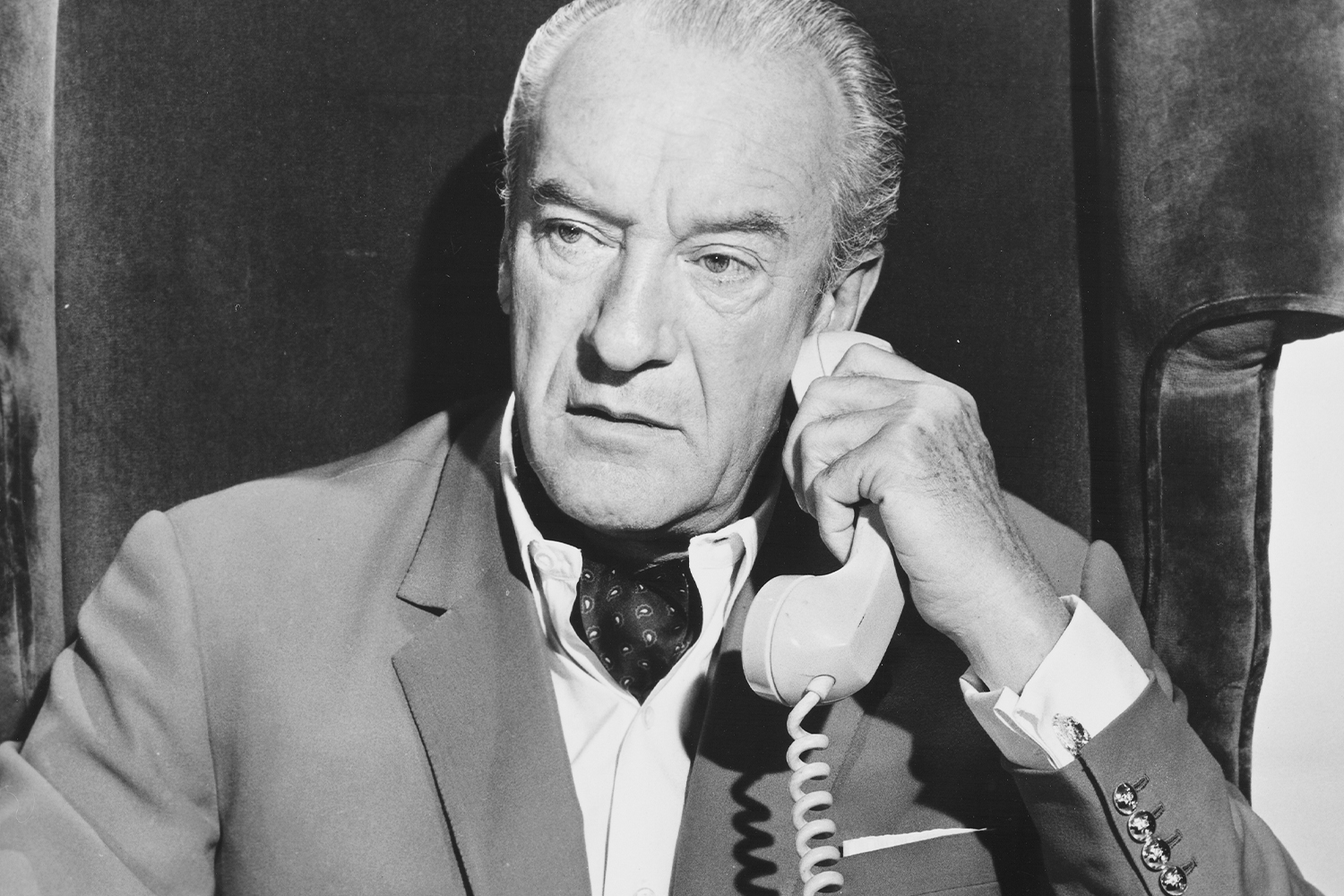 John Springer Collection, Getty Images
John Springer Collection, Getty Images
34. He Had Unkind Words
After his time on Solomon and Sheba, Sanders did not have kind words for co-star Brynner. He recounted how Brynner had an entourage of people with rather meaningless tasks. Some kept his head perfectly bald with an electric razor, while others rushed to light him up when he needed it.
What Sanders really hated, however, was Brynner’s attitude.
35. He Had A Reputation
Sanders unkindly described his costar Yul Brynner as “sphinxlike” as his entourage took care of his every whim. He also went on about Brynner’s pretentious outfits which consisted of either a black or white leather Christian Dior suit.
It was quickly becoming apparent that you didn’t want to be in Sanders’ bad books. He was getting a reputation as someone who could easily rip you to shreds with a few well-chosen words.
 ullstein bild Dtl., Getty Images
ullstein bild Dtl., Getty Images
36. He Was Rude
Sanders also had a reputation of a different nature. It turned out that he hated giving interviews and it was for a surprising reason: because he didn’t receive any money from them. To make matters worse, Sanders didn’t give autographs to fans.
He certainly wasn’t one to charm his fans and insisted that he liked that people thought he was “rude and disagreeable”. But that wasn't all.
37. He Stopped The Laughter
Sanders was appearing with comedic actor Peter Sellers in his hilarious second installment of the The Pink Panther movie series: A Shot In The Dark. Sellers was a hilarious improviser and often caused crew members to break into laughter and therefore ruin the take.
To combat this, Sanders introduced a kitty that anyone who broke into guffaws would have to pay into. By the end of the filming, it totalled 200 pounds—which they donated to a farmer. A Shot in The Dark was a goofball comedy. What came next was something much more serious.
 Silver Screen Collection, Getty Images
Silver Screen Collection, Getty Images
38. He Was His Hero
George Sanders had been a big fan of Italian director Roberto Rossellini and got a chance to act in one of his films: Journey to Italy. Sanders’ costar was Ingrid Bergman, who was also the famed director’s wife. Sanders was more than a little excited to be working with one of his heroes of direction. Things, however, didn’t quite turn out as Sanders had hoped.
39. He Burst Into Tears
Sanders was likely very excited to see Rossellini’s directing style. However, Rossellini seemed far more preoccupied with his scuba diving hobby than actually directing the film.
Sanders apparently spent the time in Italy feeling frustrated and angry and even bursting into tears. In spite of his unpleasant experience on the set, Journey to Italy is on the Toronto International Film Festival’s Essential 100 list of films.
40. They Had An Awkward Reunion
After what happened with Sanders’ wife and her lover, it was no surprise when Sanders and Gabor split up. They finalized the divorce in 1954, but then had a very awkward reunion. You see, Sanders and his brother were working together on 1956’s Death of a Scoundrel, and who should walk in as the leading lady? You guessed it: Zsa Zsa Gabor.
Luckily, it seemed as though the split with Gabor had been amicable. Sanders was ready for wife number three.
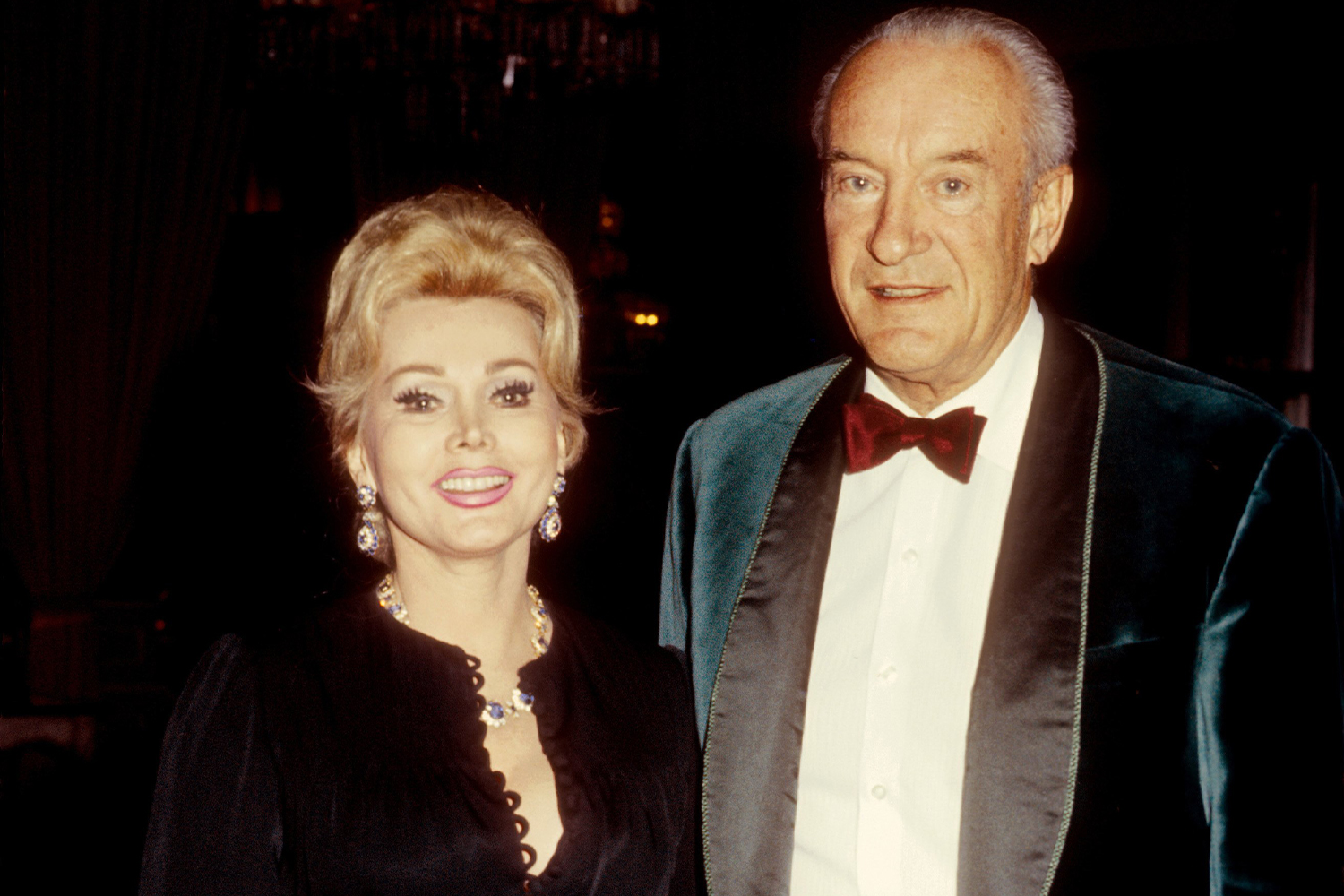 Michael Ochs Archives, Getty Images
Michael Ochs Archives, Getty Images
41. He Swept In
Ronald Colman was a British star who had made the transition from silent films to Hollywood talkies. After appearing in Around the World in 80 Days, his next picture was going to be a horror movie called Village of the Damned. When the writers finished the script for the film, Colman wasn’t ready to film.
Sadly, he’d passed as a result of an operation. Colman’s demise left his wife, Benita Hume, a widow—but not for long. It seemed that Sanders was waiting in the wings. He swooped in and married Hume just one year after she’d lost her husband. But there was another weird twist in store.
 Universal History Archive, Getty Images
Universal History Archive, Getty Images
42. He Replaced Him
Sanders had taken Colman’s wife, but that wasn’t all. Remember, Colman was going to appear in a horror movie just before his passing. When the producers of the film realized they needed a new leading man, they turned to Sanders. Sanders had married Colman’s widow and then taken his final film appearance. Surely this was not a great start to a marriage.
43. It Didn’t Last
Sanders later described his marriage to Hume as “the best thing that has happened” in his life. Sadly, the marriage was not going to last. Only a few years after they wed, Hume got a horrible diagnosis: She had bone cancer. Sanders canceled a show he was supposed to star in on Broadway and prepared to take care of his wife.
In 1967, Hume lost her battle with cancer and Sanders lost his one true love. The loss devastated Sanders, and he used his pain as an inspiration for his next acting role.
44. It Was A Coincidence
In 1967, Sanders got a call to voice a character in Disney’s animated movie The Jungle Book. The character was Shere Khan who was a ruthless tiger that hated all humans—a good fit for how Sanders was feeling after losing his wife.
Animators made Shere Khan look exactly like Sanders—and of all the characters, this resemblance is the most uncanny.
45. He Called It Quits
After The Jungle Book, Sanders did one last film. This was the John Huston directed The Kremlin Letter. In his first scene, Sanders—who was then 61 years old—is in a San Francisco gay bar and playing the piano. After completing the picture, he announced that he was through with show business.
It seemed that Sanders had still not recovered from losing his wife. Sadly, there was more heartache in store.
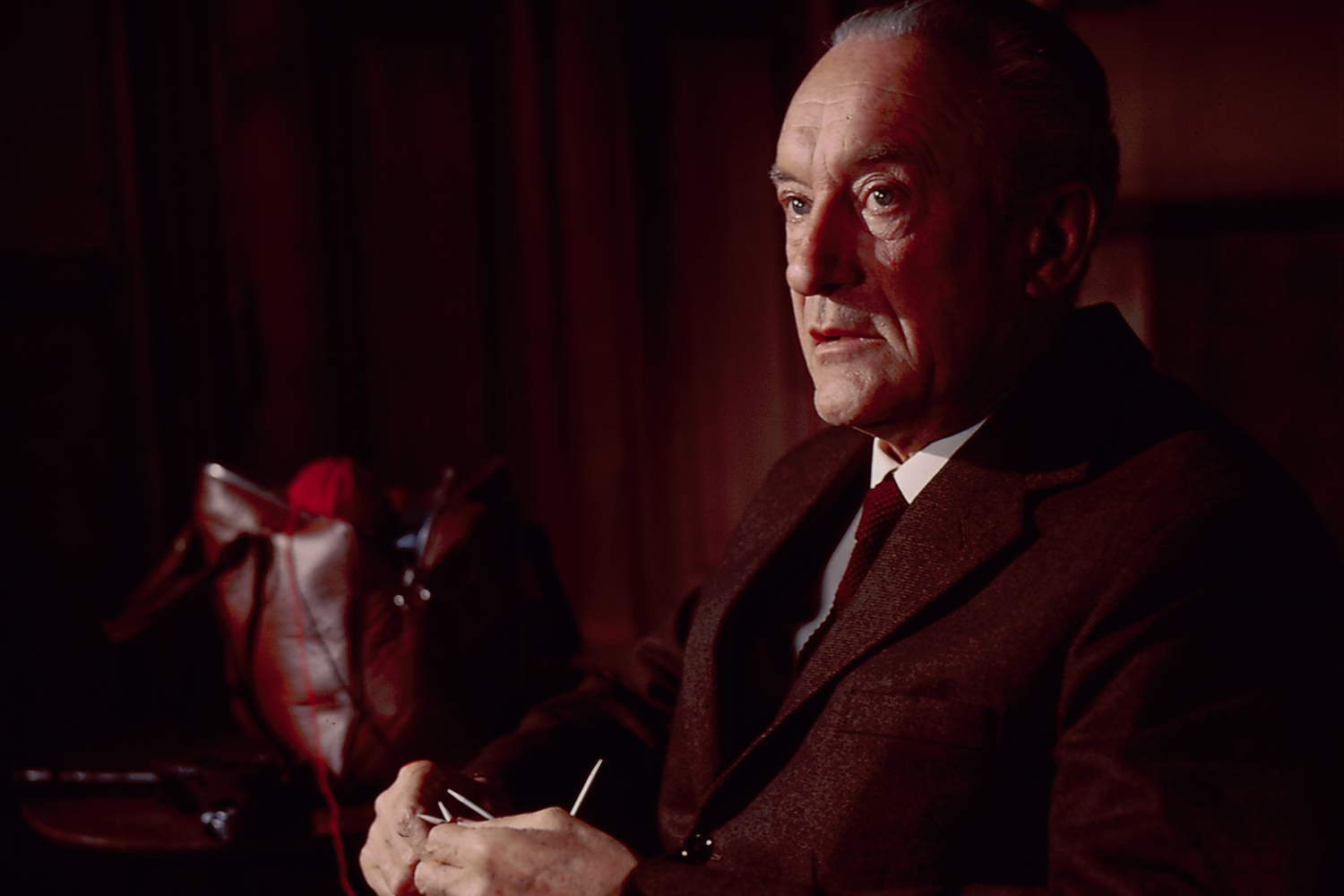 Stanley Bielecki Movie Collection, Getty Images
Stanley Bielecki Movie Collection, Getty Images
46. He Faced A Double Tragedy
While mourning the loss of Hume, Sanders had more tragedy to deal with. He lost both his mother and brother Tom Conway in one year. Around the same time, Sanders made a poor investment and lost millions of dollars. Things were looking bad for Sanders, so he looked in an unlikely place for help.
 20th Century Fox, Getty Images
20th Century Fox, Getty Images
47. She Made An Unusual Offer
Even though Zsa Zsa Gabor had cheated on him, Sanders and his ex-wife remained close after their divorce. In 1970, Gabor saw how distraught her friend was. He was lonely and hurting financially. Gabor, in her special guileless way, offered Sanders more than a shoulder to cry on. She offered her own sister.
Gabor could see how much Sanders was suffering, so she did what she thought was best: She suggested he marry her sister.
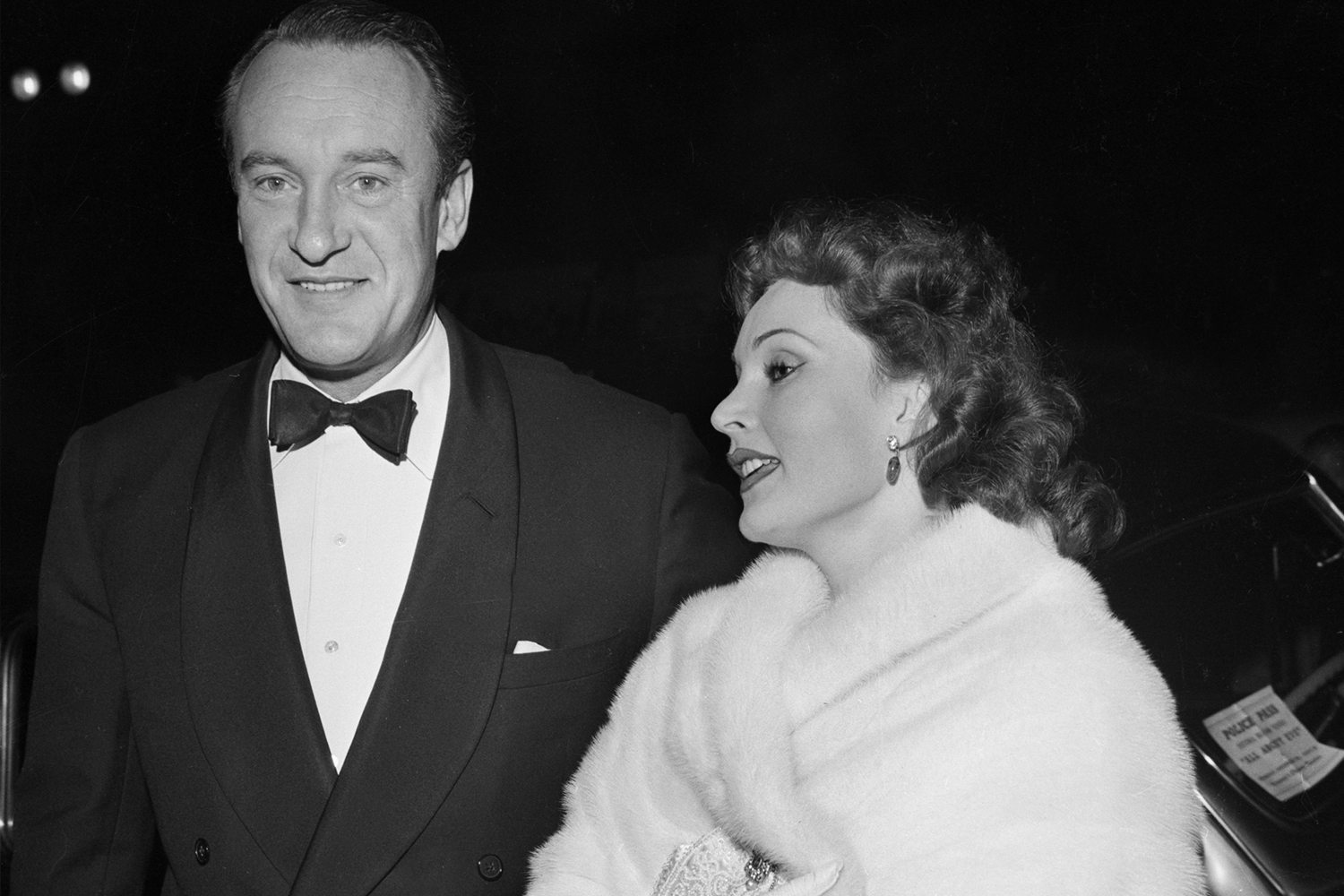 Michael Ochs Archives, Getty Images
Michael Ochs Archives, Getty Images
48. His Marriage Was A Sham
Zsa Zsa Gabor’s sister, Magda Gabor had suffered from a stroke—something that would also ail Sanders in his final years. The two of them were, quite frankly, a mess.
This would be Magda Gabor’s fifth marriage and Sanders’ fourth and final. Sanders soon saw the marriage for what it was—a sham—and had it annulled only 32 days after they’d wed. This was a cue for Sanders: he began a phase of heavy drinking.
49. He’d Lost It
Even though his marriage to Magda Gabor had been a disaster, after it, Sanders still felt terribly alone. He was also suffering from a poor memory, which may have been a precursor to dementia. In addition, Sanders discovered that he no longer had the capacity to play the piano.
When he realized that he’d lost that skill, he looked at the glorious grand piano in his house, took it outside and destroyed it with an axe. While it seemed that Sanders was at the end of his rope, believe it or not, he still had the energy to date.
50. He Sold It
From 1968 to 1972, Sanders dated Mexican actor Lorraine Chanel, who had also been in a relationship with Gary Cooper. Chanel had been in a few forgettable movies but was hardly a star. For some unknown reason, Chanel persuaded Sanders to sell something that he really loved: his house in Majorca, Spain.
The loss of his beloved home was yet another reason for Sanders to feel depressed. On April 23, 1972, he’d had enough.
 Michael Ochs Archives, Getty Images
Michael Ochs Archives, Getty Images
51. He Checked Himself In
Sanders couldn’t see much reason left to live. He went to a town called Castelldefels, which is near Barcelona. There, he checked himself into a hotel and swallowed five entire bottles of Nembutal, which is a barbiturate. Even with this large number of pills, he lived for another two days. When he passed he was 65 years old.
In case there was any doubt about what had happened, Sanders left two notes explaining why he’d taken the pills.
 Michael Ochs Archives, Getty Images
Michael Ochs Archives, Getty Images
52. He Left Behind A Note
We only have one of the notes that Sanders wrote and it goes like this: “Dear World, I am leaving because I am bored. I feel I have lived long enough. I am leaving you with your worries in this sweet cesspool. Good luck”. It was clear that Sanders had taken his own life. While this act seemed to come out of nowhere, the reality is something quite different.
53. He Knew It All Along
Three years after Sanders had taken his own life, actor and writer David Niven wrote his memoir Bring on the Empty Horses. In the memoir, Niven revealed what he’d known about his friend Sanders for some time. It turns out that way back in 1937, Sanders had confided in him that he would use barbiturates to take his own life and that he would do it when he was 65 years old.
Was this just a good guess or his plan all along? Probably, we’ll never know.



